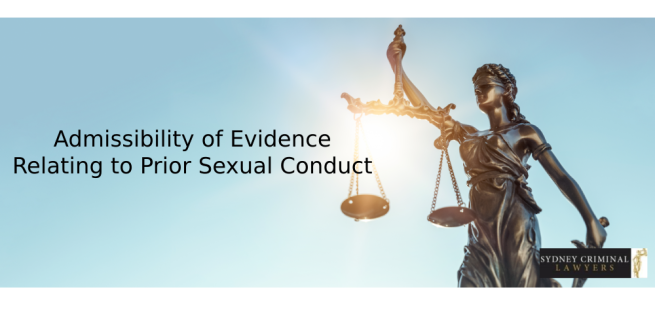By Paul Gregoire and Ugur Nedim
A NSW man referred to as Cook, not his real name, was convicted of 17 child sex offences by the NSW District Court in 2019, with the victim-survivor being his then wife’s niece, who was aged 9 to 11 over the course of the offending said to have occurred from 2011 through to the end of 2014.
However, prior to these events, of which the girl told her “NSW aunt”, who was then divorced and not living with Cook, in December 2017, the girl had been living with her “Queensland aunt”, whose de facto partner was later convicted of sexually assaulting her over 2008 and 2009.
After the girl raised the Queensland offending, her father didn’t believe her, but sent her to live with her NSW aunt. But Cook and his wife believed the girl’s accounts, convinced her father they were true, and assisted her in making statements to police, as well as testifying in court on her behalf.
In 2012, the Queensland offender was convicted on four counts of rape and seven of indecent treatment of a child. But a successful 2013 appeal overturned this. Yet, no retrial took place, rather the man then pleaded guilty to four counts of indecently treating a child under 12 in his care.
The NSW aunt took the then 15-year-old girl to the police in late 2017, and she gave a statement regarding the first ten alleged crimes Cook was convicted of, with the first taking place six weeks after the other man was convicted. But Cook states his ex-wife convinced the girl to make false claims.
Proceedings prior to the High Court
A NSW District Court jury convicted Cook over 17 counts in August 2019. The first seven were sexual intercourse with a child under 10 years old, contrary section 66A of the Crimes Act 1900 (NSW), which is an offence that carries a maximum penalty of life imprisonment.
And this crime also carries a standard non-parole period of 15 years.
An SNPP only applies to certain offences and acts as a guidepost for a court when setting a non-parole period: the minimum time an offender must spend behind bars before being eligible for parole. But a court is not obliged to follow the standard when determining a non-parole period.
The NSW man was also found guilty by the jury of aggravated indecent assault, contrary to section 61M(2) of the Crimes Act. And this now revoked law carried 10 years, due to the fact that these alleged acts were perpetrated either immediately before or after an assault.
Since the comprehensive 2018 overhaul of child sexual abuse laws, however, the criminal behaviour involved in aggravated indecent assault is captured by the offence of aggravated sexual touching, contrary section 61KD of the Crimes Act, which carries up to 10 years in prison.
Yet, section 61M of the Crimes Act continues to apply to those offenders who committed aggravated indecent assault prior to its revoking on 1 December 2018.
Cook was also found guilty of six counts of sexual assault of a person under 16 years of age, contrary to section 61J of the Crimes Act. And this offence, which constitutes aggravated sexual assault due to the girl’s age, carries up to 20 years gaol time.
On 6 March 2020, NSW District Court Judge Andrew Colefax sentenced Cook to 20 years imprisonment, with non-parole set at 15 years.
The NSW Court of Criminal Appeal permitted Cook to challenge his convictions in 2022 based on three grounds. And the appeal was successful and led to his convictions being quashed and a retrial ordered, as the first ground of appeal had been made out.
The successful ground involved the trial judge having handed out a Jury Question Trial document, which details matters that jurors must determine to form factual questions. But instead of explaining its content to the jurors as he should have, his Honour sent them away to contemplate it themselves.
The third ground was based on a voir dire, a pre-trial decision on a question of law, which involved whether section 293(3) of the Criminal Procedure Act 1986 (NSW) did apply to his case. And while one of the NSWCCA justices found this ground was made out, the other two, the majority, did not.
Exceptions queried
After the NSWCCA ordered a retrial instead of acquitting him, Cook appealed this to the High Court of Australia, with a hearing on 14 May this year, based primarily on the subsection 293(3) of the Criminal Procedure Act ground, along with two other points to be heard as an alternative.
These days, however, section 293 now appears under section 294CB of the Criminal Procedure Act, with the same title it originally had: “admissibility of evidence relating to sexual experience”.
Subsection 293(3) holds that evidence that discloses or implies the complainant may have had sexual experience or a lack of it or may have partaken in any sexual activity or not is inadmissible.
Judge Colefax denied the availability of the Queensland offending evidence based on this provision but did allow it to be referred to as “physical assaults” that had occurred to the girl.
And in the High Court, Cook argued, as before, that the Queensland offending could be raised due to current subsection 294CB(4)(b) and he also pointed to 294CB(4)(a) as potentially opening up this avenue for the evidence to be heard in court.
Subsection 294CB(4)(a) provides that subsection 294CB(3) doesn’t apply if the evidence about sexual experience or sexual activity happened around the time of or “is of events that are alleged to form part of a connected set of circumstances” to the “alleged prescribed sexual offence” on trial.
While subsection 294CB(4)(b) provides that subsection 294CB(3) does not hold “if the evidence relates to a relationship that was existing or recent at the time of the commission of the alleged prescribed sexual offence, being a relationship between the accused person and the complainant”.
As part of the voir dire, Cook had argued 294CB(4)(b) should permit the Queensland events to be discussed as there was a relationship between him and the girl and he added that he did not want to delve into the Queensland sexual offending in any great detail.
The evidence that he sought to put before the court included references to the girl being moved between homes, the Queensland offending “in general terms”, her disclosure to her father and step-mother, her disclosures to him, as well as the investigation and prosecution of the Queensland man.
The findings of the High Court
The High Court noted that it was common ground at proceedings that the voir dire had resulted in the section 294CB(4)(b) not providing an exception to the admissibility of prior sexual experience, as the trial judge had confused the “relationship” as referring to the girl and the Queensland man.
In terms of subsection 294CB(4)(a), four of the five High Court justices presiding found that in regard to whether sexual activity and sexual experience or lack of it is connected to offences before a court, there is a difference between the two, as experience is something built up over time.
And when this subsection is triggered, it usually involves sexual experience, and in the current case that would involve “the Queensland evidence was evidence about the complainant’s sexual experience as a survivor of sexual assault”.
Cook argued this should apply as the Queensland events “form part of a connected set of circumstances” with his case, as it is the reason the girl ended up coming to live with him and his then wife. However, the High Court found that this was too narrow a reading of this provision.
But the second exception, 294CB(4)(b), likely applies to the Queensland evidence because it does relate to the relationship between the girl and Cook, as she told him about being abused by the other man and this relationship existed between them at or around the time of the alleged offences.
“The evidence that relates to a relationship cannot be identified without first identifying the nature and scope of the relationship,” explained High Court Acting Chief Justice Michelle Gordon and Justices James Edleman, Simon Steward and Jacqueline Gleeson.
“The relationship described by the second exception encompasses a wide range of possibilities, permitting evidence to be adduced by both the prosecution and the defence which would otherwise be prohibited by” section 294CB(3).
The justices then elaborated this could be a relationship that consists of abuse or trust and confidence or mutual emotional connection.
Their Honours added that if the trial judge had not misconstrued the nature of the relationship during the voir dire, then some of the Queensland evidence may have been admitted, while as for the NSWCCA finding, it had been constrained by the evidence before the NSW District Court.
So, this ground of appeal was made out and Cook’s further two grounds of appeal were dismissed.
Retrial necessitated
But while the ground was made out, a retrial was necessary, as firstly there was no evidence before the High Court to deliberate upon whether there was a relationship between Cook and the girl, which, if established via submissions, could provide for the Queensland evidence to be discussed.
So, the four justices of the High Court ordered a retrial on 7 August 2024 and overturned the NSWCCA’s finding that subsection 294CB(4)(b) didn’t apply to the case, while High Court Justice Jayne Jagot provided a dissenting opinion, as she did not agree that the ground should be upheld.











